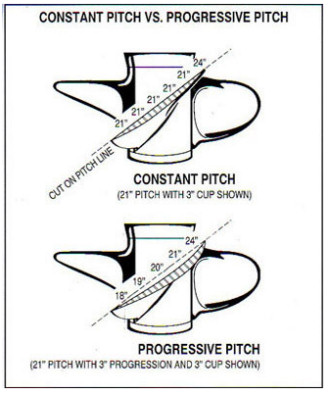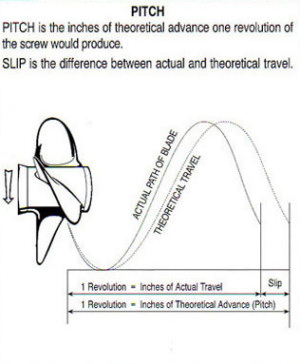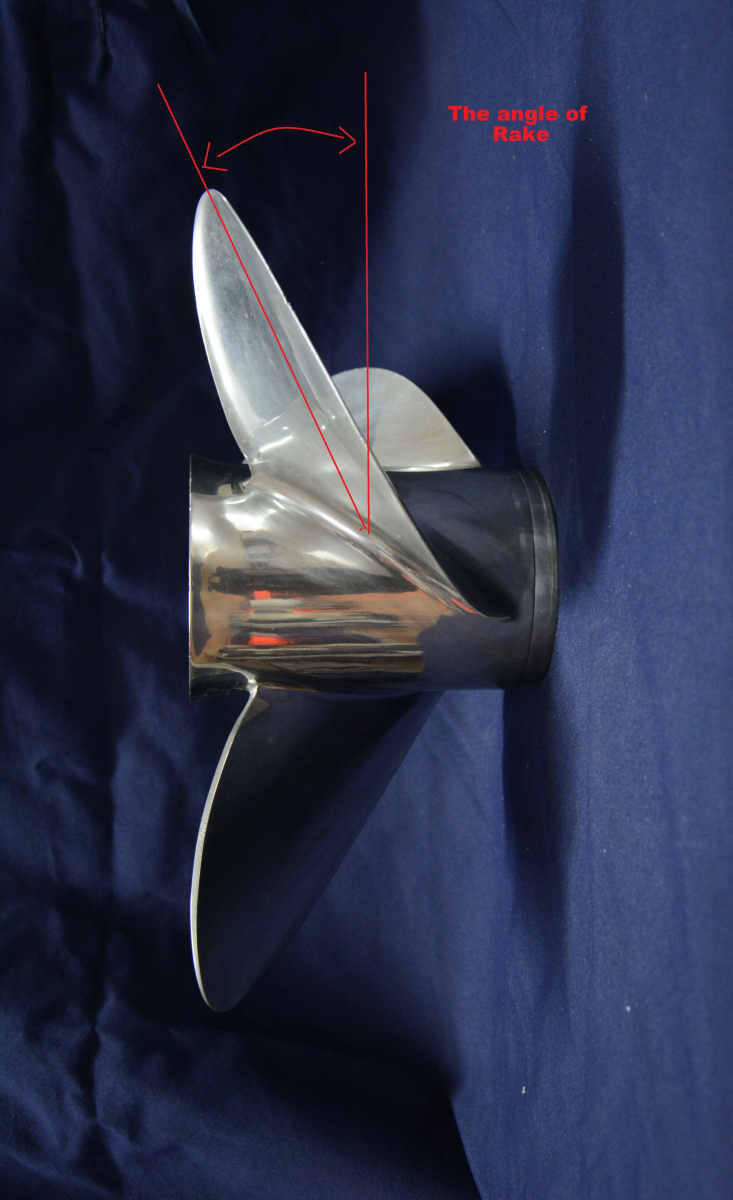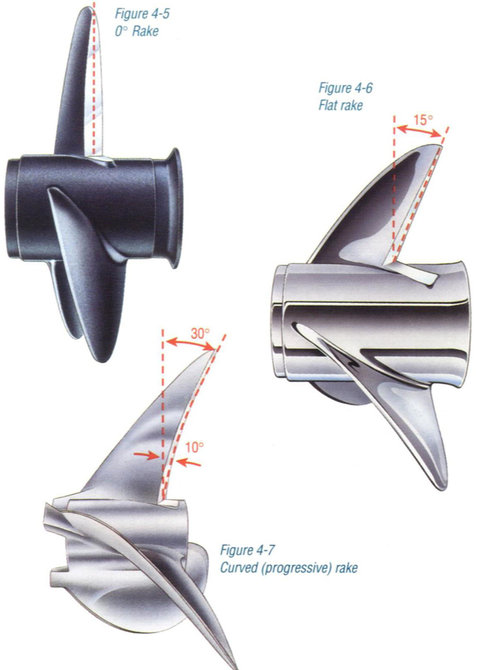

 Rake
Rake
Rake
is the angle of propellers to the hub. We can
either have positive or negative rake angle.
The rake angle is measured from line
perpendicular to the propeller. Rake improves
performance by keeping the water between
blades and hub longer. Rake does not have to
be constant along the whole length of edge. As
we can see in the picture below rake can start
at 10 degrees at the root of the blade all the
way to 30 degrees at the tip of the blade.


Skew
Skew
makes the blade asymmetrical when viewed from
fore. Skew ensures that the radial sections of
the blade does not pass through a section at
the same time. Skew delays the entry of each
section. Blades can have positive or negative
skew. Skew of a blade reduces vibrations.
3a - Positive skew
3b - Negative skew

Cup
Cup is a small curl
located at the tip of a blade and. It is always
bend towards the aft of the boat. Cupping on the
tip of blade increases rake and when added to
the trailing edge it increses pitch therefore
improving the performance of the propeller.